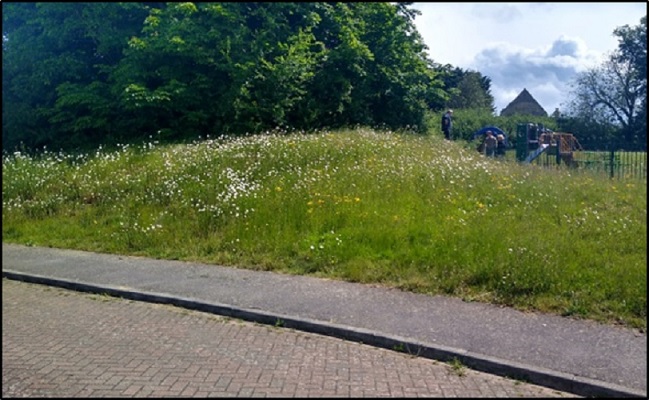Don't forget your Voter ID
If you are voting in person in the General Election on Thursday 4 July, you will need to take an accepted form of photo ID with you.
We are changing the way we manage the grass verges and open spaces that we're responsible for.
This is so we can better support our local wildlife and plant life.
In addition to our successful trees, hedgerows and wildflowers scheme, we are also looking at how we can improve the land that we own.
Areas of meadow can often be produced by changing mowing regimes on open spaces and verges. This encourages wildflowers and grass to grow.
Where it is safe to do so - for example, in areas where driver visibility is not affected - we are reducing grass cutting on some verges and open spaces that we are responsible for.
When we let the grass grow naturally, we are able to see which flowers appear.
We can then source seeds which best complement the existing flowers - to increase their numbers, where needed.
Where we don't have responsibility for an area, we are actively working with others (such as town and parish councils) to help them introduce their own wildflower areas, or plant more trees. This is via our trees, hedgerows and wildflowers scheme.
The following image shows an example of an area left entirely uncut:

The following image shows an example of strips cut to either side of the path:

Cutting grass may be an easy way to keep open spaces looking tidy, but it isn't very good for wildlife or the environment.
When our Biodiversity Action Plan was approved, we made a commitment to increase the number of wildflower areas across both districts.
The aim of this is to help increase our local wildlife and plant life, and support the environment.
We have already introduced wildflower meadows in towns and villages across the districts of Babergh and Mid Suffolk.
You can find out more with our interactive mapping service. Follow the instructions below:
Click on the three lines in the top left corner of the map:
From the dropdown menu, select 'Map Features':
Then select 'Public Realm Maintenance Contracts':
Finally, select the 'GRASS CUTTING' box. They appear as hatched areas and will show the number of cuts per year.
The map will be updated as we add more areas.
We hope to gradually do this in many more places over the coming years.
Look out for our 'We're letting it grow to help the flowers show' signs during the Summer months.
We display these signs on areas where we haven't left the grass to grow before.

Yes!
Most meadow areas will be cut in early Spring - at the start of the mowing season, before most flowers appear.
They will then be left until the end of the Summer, when we will cut and clear them again.
These cuts help to control the grass, and help the flowers grow.
Where needed, we will maintain our wildflower areas in between cuts, too. We will do this in a way which supports wildflower growth, once the grass is left to grow again during coming Summers.
Long grass is still much better for wildlife than short grass.
However - in some cases - we can add suitable native wildflower seed to benefit wildlife, and help make areas look more interesting.
Look out for our 'We've seeded this area to encourage more flowers in the Summer' signs, which we place on areas where we have added seed:
Weeds are plants that are growing in the wrong place. The plants you might consider to be weeds in your garden, are actually mostly native wildflowers.
Although dandelions, daisies and buttercups might not look as pretty as other flowers, they are great for wildlife - and perfect for a wildflower meadow.
No.
We have had to invest in a new mower, which allows us to carry out the special cuts that are needed to encourage wildflower growth.
With the support of our Biodiversity Project Manager, our Grounds Maintenance team will also continue to manage these spaces as carefully as we did before. We will also have more time to maintain other spaces, too.
We always want to know whether there are:
We also want to hear your thoughts on the following questions:
We'd love to hear from you. Please email your thoughts to biodiversity@baberghmidsuffolk.gov.uk
You can also start your own meadow area - no matter how big or small.
You can leave an area of your garden to grow during Spring and Summer to find out which flowers might appear. You may be surprised!
Town and parish councils, schools, community groups and businesses can help too. All you need is an area of grass that can be left for a few months.
We have also produced a sign - similar to ours - which you can download, print and display on your own meadows: